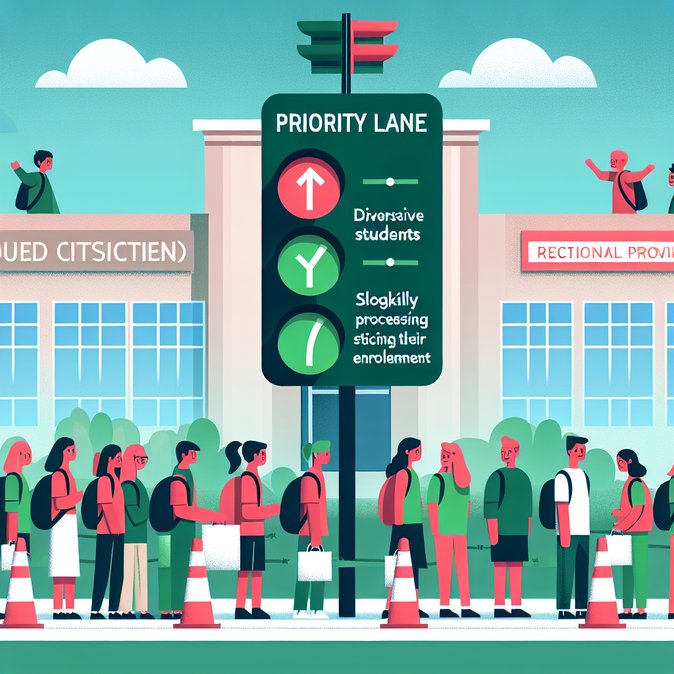
In another sign that Canberra intends to curb runaway international-student growth while shoring up visa integrity, Immigration Minister Andrew Giles yesterday signed Ministerial Direction 115 (MD 115) – a legally-binding instruction that rewrites how every offshore Subclass 500 (Student) application will be prioritised from 14 November 2025. Under the new framework, Home Affairs case-officers must sort files into three lanes that mirror how closely a university, college or VET provider sticks to the 2026 National Planning Level (NPL) quotas set earlier this year. Providers that have filled less than 80 % of their quota will enjoy Priority 1 treatment, with decisions promised in as little as one to four weeks. Institutions sitting between 80 % and 115 % of their cap fall into Priority 2, where the advertised service standard is five to eight weeks. Crucially, any provider that has overshot its NPL allocation by more than 115 % will be pushed into a newly-created Priority 3 “slow lane”, where applications may languish for three months or more.
The government says the reform is about “managed growth”. After a year in which offshore student-visa lodgements fell 26 % and commencements dropped 16 %, Assistant Minister for International Education Julian Hill told sector leaders that MD 115 “rewards good actors and penalises volume-chasers”. Education providers in regional Australia – many of which remain below their indicative allocation – are expected to benefit from faster decisions, potentially giving them a competitive edge in the 2026 recruitment cycle.
![Australia introduces three-tier ‘fast, standard, slow’ lanes for student-visa processing under Ministerial Direction 115]()
Institutions that currently rely on high-volume, metro-campus intakes face difficult choices: cut offers, invest in new regional campuses or prepare for lengthier visa queues that could deter prospective students. Agents warn that longer wait-times for some universities may see applicants shift to competitors in Canada or the UK. Larger providers are already modelling scenario-planning for January and July 2026 intakes, including redistributing cohort targets across branch campuses.
For corporate mobility and HR teams, the directive is a double-edged sword. Companies that sponsor dependants of students – for example via part-time work or graduate programs – will gain if their preferred institutions sit in Priority 1. Conversely, employers that rely on talent graduating from oversubscribed universities may find onboarding timelines pushed back. Multinationals with Australian graduate intakes should therefore map their feeder institutions against the new lane system and adjust internship or start dates accordingly.
Overall, MD 115 cements a policy direction that puts a ceiling on total international-student numbers, aligns growth with housing capacity and pushes enrolment into the regions. While the headline does not change the underlying visa criteria, the new queuing mechanism will reshape recruitment patterns – and, by extension, future skilled-migration pipelines – for years to come.
The government says the reform is about “managed growth”. After a year in which offshore student-visa lodgements fell 26 % and commencements dropped 16 %, Assistant Minister for International Education Julian Hill told sector leaders that MD 115 “rewards good actors and penalises volume-chasers”. Education providers in regional Australia – many of which remain below their indicative allocation – are expected to benefit from faster decisions, potentially giving them a competitive edge in the 2026 recruitment cycle.

Institutions that currently rely on high-volume, metro-campus intakes face difficult choices: cut offers, invest in new regional campuses or prepare for lengthier visa queues that could deter prospective students. Agents warn that longer wait-times for some universities may see applicants shift to competitors in Canada or the UK. Larger providers are already modelling scenario-planning for January and July 2026 intakes, including redistributing cohort targets across branch campuses.
For corporate mobility and HR teams, the directive is a double-edged sword. Companies that sponsor dependants of students – for example via part-time work or graduate programs – will gain if their preferred institutions sit in Priority 1. Conversely, employers that rely on talent graduating from oversubscribed universities may find onboarding timelines pushed back. Multinationals with Australian graduate intakes should therefore map their feeder institutions against the new lane system and adjust internship or start dates accordingly.
Overall, MD 115 cements a policy direction that puts a ceiling on total international-student numbers, aligns growth with housing capacity and pushes enrolment into the regions. While the headline does not change the underlying visa criteria, the new queuing mechanism will reshape recruitment patterns – and, by extension, future skilled-migration pipelines – for years to come.







